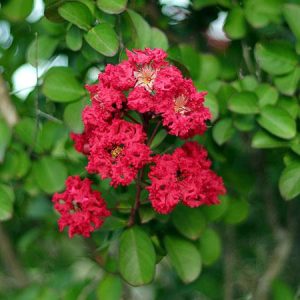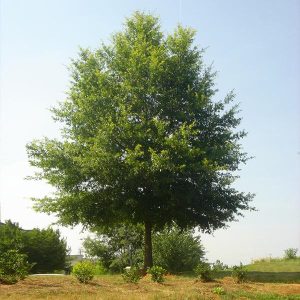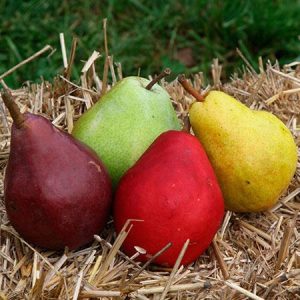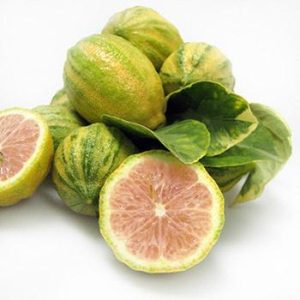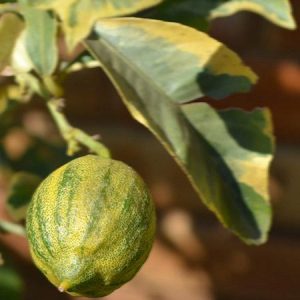Trovita Orange Tree Online Sale
- Estimated Delivery : Up to 4 business days
- Free Shipping & Returns : On all orders over $200
The Juiciest and Sweetest orange
Trovita Oranges are extremely popular to grow at home because they are low maintenance and produce tons of sweet oranges. With every bite you’ll find yourself enjoying an explosion of rich, citrus juice that awakens the senses.
Common oranges found in grocery stores sit in storage for a long time and grow bitter as a result. They don’t even come close to fresh, sweet Trovita oranges that can be stored for months without becoming sour.
It only takes a few seconds to get a Trovita orange out of its thin, easy to peel rind, revealing vibrant orange flesh underneath. As soon as you start to remove the skin a strong citrus scent will fill the room, making the orange slices irresistible.
The abundant juice and rich flavors found in Trovita oranges make them a refreshing snack that satisfies sweet cravings and makes them perfect for juicing. Imagine starting the day with your homemade orange juice without tons of added sugar or preservatives.
You don’t have to go far to find Trovita Oranges, because they can be grown anywhere, including in your own home. Trovita Oranges are one of the top citrus trees to grow in containers.
They make for delightful houseplants with attractive, lush foliage that stays green all year. The leaves have a citrus scent that will fill the room and naturally freshens the air. Your guests will love coming in and being greeted by the rich citrus scent.
Trovita Oranges become even more fragrant and beautiful when they enter their blooming cycle and tons of white blossoms cover the tree. The stunning, flowering tree will become the life of the party, and everyone will want to know all about your indoor orange tree.
Your family and friends will be impressed every winter by the large number of Trovita Oranges you’ll have to harvest after hardly giving your low maintenance tree any attention.
Planting & Care
The Trovita Orange Tree (Citrus Sinensis Trovita) is a low maintenance, fragrant citrus tree that is recommended for USDA growing zones 8-11. For cooler zones, grow this tree in a container and bring it indoors during the winter months. Reaching a mature, dwarf height and width of only 7-10 feet, it’s a perfect addition to any small garden or as a fragrant potted plant in your home. The glossy, fragrant leaves are accompanied by an abundance of white flowers in the spring which give way to medium sized fruits. They have an easy to peel rind with a juicy, sweet flesh that is perfect for juicing or enjoying right off the tree. They’re ready for harvesting between December and February and packed with vitamin C.
Seasonal Information: Trovita trees will do best in warmer climates as it is classified as a tropical plant. Zones 8 to 11 are ideal for outdoor planting. However, if you do experience cold winters, plant your Trovita tree in a container and bring it inside for the fall and winter seasons. We recommend planting in Spring through Fall for outdoors since they are sensitive to colder temperatures.
Selecting a location: Choose a location where your tree is going to get plenty of sunlight, 6-8 hours per day is best. They can tolerate some shade, but thrive in full sun. You’ll want to ensure trees are spaced 8-10 feet apart if planting more than one. These trees also do better in areas with high humidity so you may also need to create humidity for your tree by misting the leaves daily with water. Potted plants do enjoy a daily misting for humidity but placing a tray with rocks filled with water under the plant will feed humidity to the tree as the water evaporates.
Planting Directions (in Ground): If you are located in zones 8-11 and your winter temperatures stay consistently warm, your Trovita will do well being planting outside in the ground. Be sure the area has well draining soil.
1) Dig a hole twice as wide and just as deep as the root system.
2) Place the tree in the hole and back fill it with your sandy, well-drained, acidic soil. If you have clay soil, try amending it with sand, stone, perlite or fine potting soil.
3) Tamp the soil down as you backfill the hole to cut back on any pockets from forming.
4) After planting, be sure to give your Trovita tree a deep watering for about 5 minutes. Mulching around the tree will help insulate the roots and keep your plant warm in the colder winter months as well.
Planting Instructions (potted): If your winter temperatures are consistently below 40 degrees, plant your tree in a container that can easily be brought outside in the summer months and inside in the winter. A planter with built-in casters is a good choice so it can easily be moved. Choose a pot slightly larger than what it was shipped in that has plenty of holes in the bottom to allow for drainage. Be sure to plant in well-draining potting soil preferably recommended for acid loving citrus plants.
1) Fill your pot halfway with soil. Remove the tree from it’s original pot and gently place it in the potting soil.
2) Fill in around the tree with the remainder of the potting soil but be sure not to cover the grafted area of the tree. Leave about an inch from the soil surface to the rim of the pot for easy watering.
3) Lightly pack down the soil. Immediately after planting, give your tree a deep watering until it flows from the holes in the bottom of the pot.
4) Place your tree in an area of your home, preferably a south-facing window, where it is going to get plenty of sunlight. Supplement with a grow light if it will not receive at least 6-8 hours of sunlight a day. You may also need to create humidity for your tree by placing the pot on a saucer of pebbles or misting the leaves daily with water.
Pollination assistance: You can pollinate your indoor trees by hand since most people do not keep a healthy bee population within their home. Simply take a small, dry, fine tipped paint brush and stick it into the center of the bloom. Swirl it around and collect the pollen on the brush. Go to the next bloom and repeat the process until every bloom has been treated. Do this once daily and don’t wash the paintbrush until after the blooms have been pollinated. The bloom will fall off naturally and the fruit will begin to form.
Watering: Trovitas do not like wet feet. Be sure to give your tree a deep watering so that it can penetrate into the root system. After watering, allow the top 2-3 inches of the soil to dry out completely before watering again. Yellowing and droopy leaves is a common sign of over watering while brown, dry leaves are a sign of under watering. Mulching can help retain the soil moisture and also combat competing grasses weeds.
For potted Trovitas, stick your index finger into the soil down to about 2 inches. If there is moisture present, hold off on watering until it feels more dry at that depth. When ready to water, stop once you see it escaping the drainage holes at the base of the pot.
Fertilization: Feed your Trovita tree during the warmer spring and summer seasons with a citrus specific fertilizer once every six weeks. Espoma Citrus Tone is highly recommended but any organic fertilizer specifically for citrus should suffice. This will help keep your tree on a healthy growth cycle but also replenish the nutrients in the soil. During the fall and winter season, ease back to fertilizing once every 2-3 months. Once the tree has matured a bit and has got a few years on it, you can skip the cold season fertilization. The same fertilizing regimen should be followed for potted Trovita trees as well. Make sure to follow the application instructions written on the fertilizer bag.
Pruning: Pruning can be done at any time of the year for in ground planted Trovitas except in the winter. Make 45-degree angle cuts to remove dead or crossing limbs and also to thin out the tree to allow more light to flow between the branches. “Leggy” looking branches may indicate that there is not enough light getting to the tree’s interior. After the tree fruits, remove any dead wood and ventilate the center of the tree. Remove suckers as they form grow from the base as they will steal away nutrients from the primary trunk of the tree. Pruning can be done at any time of the year for the potted Trovita.
| Height | 1-2 ft. |
|---|









